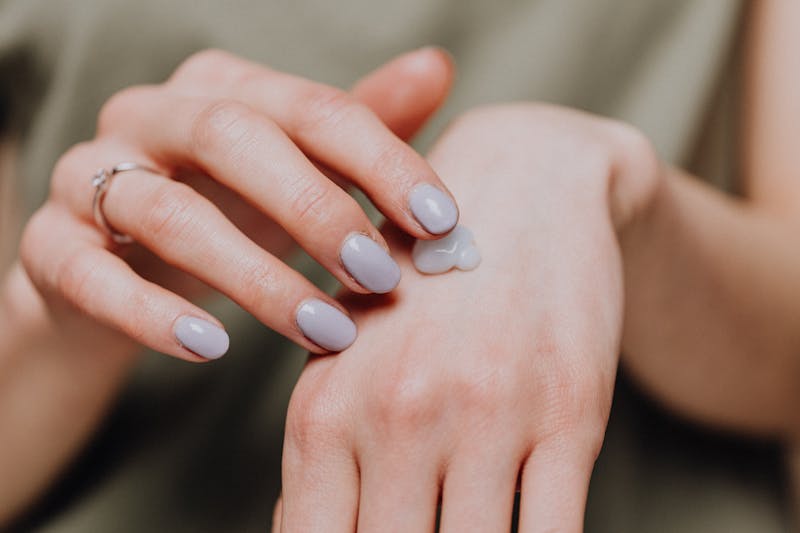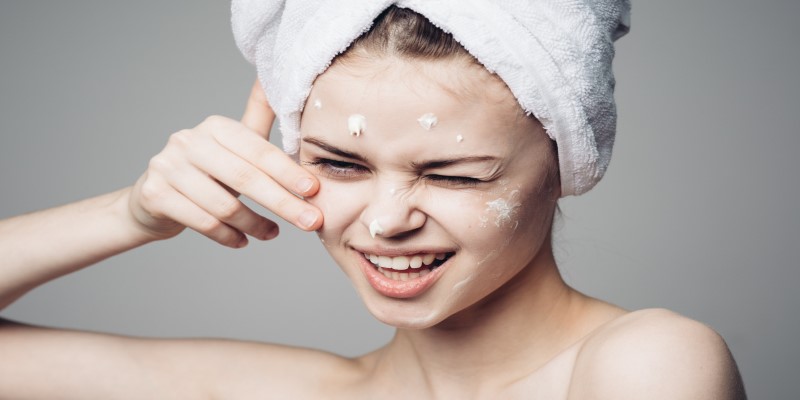Moisturizer Overload: How Too Much Hydration Can Backfire on Your Skin
Mar 08, 2024 By Madison Evans
Are you someone who just can't resist the lure of a good Moisturizer? Do you find yourself slathering on layer after layer in the pursuit of the perfect dewy complexion? Well, you might want to take a step back and listen up because there's such a thing as too much of a good thing. That's right, folks, we're talking about Moisturizer overload!
While hydration is undoubtedly essential for keeping skin plump and juicy, going overboard can lead to some less-than-pleasant consequences. From clogged pores to breakouts, we're here to give you the lowdown on why too much hydration can backfire on your skin. So sit back, relax, and get ready to learn how to strike the perfect balance for all your moisturizing needs.
The Downside of Over-Moisturizing: 5 Reasons to Keep it Light
As much as we love the idea of smooth, hydrated skin, too much of a good thing can sometimes be detrimental. Over-moisturizing can lead to a number of skin concerns, ranging from clogged pores to dry spots. Here are five reasons why you might want to rethink your moisturizing routine:
Clogged Pores
We all know the feeling of wanting to slather on that luxurious moisturizer, but too much of it can actually hinder your skin's natural ability to breathe and expel toxins. This can result in the formation of unsightly black and whiteheads and an overall congested appearance. So, let your skin breathe a little and go easy on the moisturizing.
Acne Breakouts
It's a common misconception that moisturizing can't lead to acne breakouts, but the reality is quite different. When your skin is over-moisturized, it becomes more prone to acne breakouts. The excess moisture can trap dirt, bacteria, and oil, leading to the development of pimples and blemishes. So, be mindful of how many moisturizers you use, especially in areas with high sebum production.
Bumpy Texture
Over-moisturizing can disrupt the skin's natural balance, causing it to develop a bumpy texture. This can manifest as small, raised bumps on the surface of the skin, giving it an uneven appearance. These bumps may feel slightly rough to the touch and can be more pronounced in certain areas of the face. So, give your skin a break and use moisturizer in moderation.
Excess Oiliness
Ironically, over-moisturizing can stimulate the skin to produce more sebum as it tries to compensate for the excessive moisture. This can leave the skin feeling greasy and slick, particularly in the T-zone and other oily-prone areas. As a result, makeup may have difficulty adhering to the skin, and the complexion may appear shiny and unbalanced. So, keep your Moisturizer light and let your skin breathe.

Dry Spots
Paradoxically, over-moisturizing can also lead to dry spots on the skin. When the skin's natural moisture barrier is disrupted by excessive products, certain areas may become dehydrated and flaky. This creates an uneven skin texture and can make it challenging to achieve a smooth, hydrated complexion. So, give your skin a break and use moisturizer in moderation.
Achieving the Perfect Moisturizing Routine: A Helpful Guide for Your Skin
Moisturizing is an essential part of any Skincare routine. However, with so many products on the market and debatable advice, it can be tough to know where to start. Fear not! With the following tips, you'll be on your way to a moisturizing routine that's uniquely tailored to your skin's needs.
Choose the Right Moisturizer
First things first, selecting the right moisturizer for your skin type is crucial. If you have oily skin, look for lightweight, oil-free options to prevent pore clogging. On the other hand, if you have dry skin, go for richer creams to keep your skin hydrated and supple.
Use Sparingly
When it comes to moisturizers, less is often more. Applying too much product can clog pores and leave your skin feeling greasy. So, apply a pea-sized amount for your face and neck and a generous but not excessive amount for your body. Remember, you can always add more if needed, but it's harder to remove excess.
Consider Your Environment
Your moisturizing routine should vary based on the climate and season. In humid conditions, you may need less moisturizer, while dry or cold weather may require a heavier application. Listen to your skin's needs and adapt accordingly.
Moisturize Damp Skin
For optimal absorption, apply moisturizer to slightly damp skin after cleansing or showering. This helps lock in moisture and enhances the effectiveness of the product. Pat dry gently with a towel before moisturizing.

Exfoliate Regularly
Dead skin cells can build up on the surface of your skin and prevent moisturizers from penetrating deeply. So, exfoliate regularly with a chemical or physical exfoliant suitable for your skin type. This ensures that your moisturizer is reaching its full potential.
Listen to Your Skin
Your skin is unique, and it will tell you what it needs. Pay attention to how your skin reacts to your moisturizer; if you notice signs of over-moisturizing, such as clogged pores or excess oiliness, scale back on the amount or frequency of application. Finding the right balance will leave your skin looking and feeling its best.
Wrap Up!
Well, it looks like we've made it to the end of our moisture-rich journey! Congrats on taking care of your skin like a boss. But wait, before you go all in with the moisturizer, remember that too much of a good thing can sometimes be wrong. So be gentle and listen to your skin's needs. And if you end up overdoing it, don't sweat it.
Embrace the shine and become a dewy goddess, or take a tip from the oily-skinned folks and use some blotting papers. You're not alone in this journey; we've all been there. So, don't let a little too much moisture rain on your parade. Keep your head high and your skin healthy!







